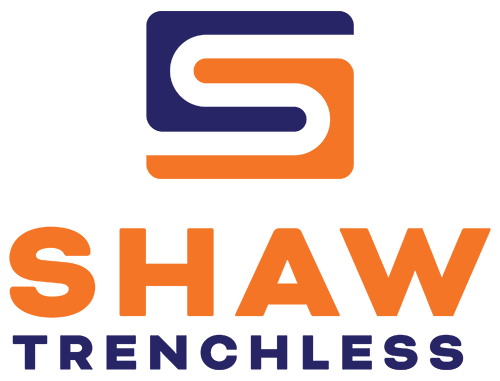
December 20, 2023
In the evolving world of underground construction and maintenance, trenchless technologies have become a game-changer. Undeniably, these innovative methods offer a more efficient, less invasive, and environmentally friendly alternative to traditional open-cut techniques for installing and repairing underground utilities. This comprehensive article aims to provide a deep dive into the various aspects, benefits, and applications of trenchless technologies, spotlighting their significance in modern infrastructure development.
Introduction to Trenchless Technologies
Trenchless technology refers to a group of methods used for installing, repairing, or replacing underground utilities, such as water, sewer, gas, and telecommunications lines, without the need for extensive excavation. This technology includes various techniques like Horizontal Directional Drilling (HDD), pipe bursting, microtunneling, and cured-in-place pipe (CIPP) lining.
The Evolution and Growth of Trenchless Technologies
Originating in the late 20th century, trenchless technologies have evolved significantly. Driven by the need for more efficient construction methods and minimal surface disruption, these technologies have grown in popularity and application, transforming the landscape of underground utility work.
Key Trenchless Technology Methods
- Horizontal Directional Drilling (HDD): Ideal for installing pipelines under rivers, roads, and existing structures, HDD causes minimal surface disturbance.
- Pipe Bursting: This method replaces old pipes by breaking them and simultaneously pulling in a new pipe.
- Microtunneling: Used for small diameter tunnel construction, this method is remotely controlled and highly precise.
- Cured-in-Place Pipe (CIPP) Lining: A method to rehabilitate existing pipelines, where a resin-saturated liner is inserted into the old pipe and cured to form a new pipe within the old one.
Benefits of Trenchless Advancements
The advantages of trenchless methods are numerous:
- Reduced Surface Disruption: These technologies significantly minimize the disturbance to road traffic, landscaping, and businesses.
- Environmental Friendliness: With less excavation, there’s reduced environmental impact, making these methods more sustainable.
- Cost-Effectiveness: Trenchless technologies can be more economical in the long term by reducing restoration costs and minimizing traffic disruption.
- Enhanced Safety: Less surface work reduces the risk of accidents at the construction site.
- Faster Completion Time: Projects can be completed more quickly compared to traditional methods.
Applications of Trenchless Technologies
Trenchless technologies find their applications in various sectors:
- Municipal Infrastructure: For water and sewage pipe repairs and replacements.
- Telecommunications: Installing fiber-optic cables for high-speed internet.
- Gas and Oil Industry: For laying pipelines.
- Environmental Projects: Like remediation of contaminated soil.
Challenges and Considerations in Trenchless Technologies
While trenchless technologies offer many benefits, they also come with challenges. These include the need for specialized equipment and skilled operators, potential risks in unknown underground conditions, and the initial higher investment in some cases.
Innovations and Future Trends in Trenchless Technology
The future of trenchless technology is bright, with ongoing innovations like robotic systems for pipe repairs, advanced materials for CIPP, and more precise underground imaging techniques. The continuous advancements are making these technologies more efficient, cost-effective, and adaptable to various environments.
Global Adoption and Market Growth of Trenchless Technologies
Globally, the adoption of trenchless technologies is on the rise. In countries with aging infrastructure, like the United States and parts of Europe, these methods are increasingly seen as the go-to solution for upgrades and maintenance. Correspondingly, the market for trenchless technologies is expanding, driven by urbanization, environmental concerns, and the need for efficient infrastructure development.
Trenchless Technology Training and Education
With the growing demand for trenchless methods, there’s a parallel need for specialized training and education in this field. Consequently, various institutions and organizations are now offering courses and certifications in trenchless technology, ensuring a skilled workforce to meet the industry’s needs.
Regulations and Standards in Trenchless Technology
The industry is governed by various regulations and standards to ensure the safety, efficiency, and quality of trenchless work. These standards are continuously updated to reflect the latest technological advancements and best practices.
Case Studies of Successful Trenchless Projects
Numerous successful projects worldwide showcase the effectiveness of trenchless technologies. From large-scale HDD projects crossing water bodies to urban CIPP lining for sewer rehabilitation, these case studies exemplify how these methods can tackle complex infrastructure challenges.
Impact of Trenchless Advancements
In conclusion, trenchless technologies represent a significant leap forward in underground infrastructure work. Offering a blend of efficiency, environmental friendliness, and cost-effectiveness, these methods are essential tools in the modern world’s construction and maintenance toolbox. As the technology continues to evolve and gain global acceptance, its role in shaping sustainable and resilient urban landscapes becomes increasingly crucial.

Contact Shaw Trenchless Today
Contact Shaw Trenchless
At Shaw Trenchless, we endeavor to offer the highest quality of services and customer satisfaction to the people of Spokane, WA, and its surrounding areas. Contact our team today to schedule an appointment.


get a quote
